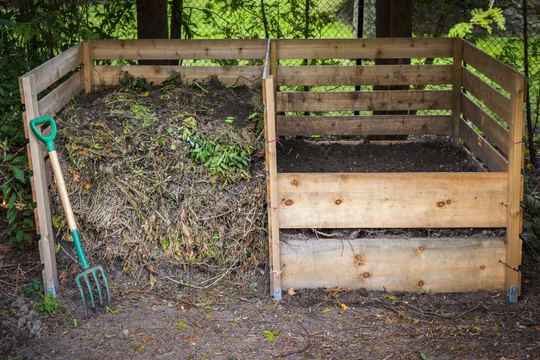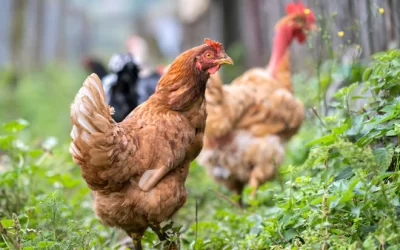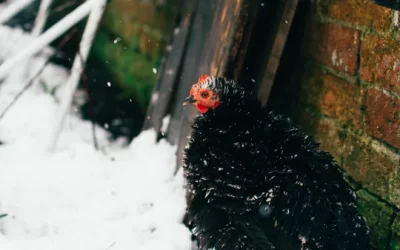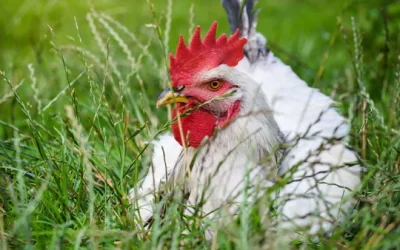Wondering how to compost chicken manure? Look no further!
Whether you are raising your backyard flock in a rural, suburban or urban setting, a big part of raising chickens is learning how to deal with the accumulated chicken manure. Even a small flock can produce a substantial amount of waste in your coops, runs, and yard, making it difficult to simply throw it out with the trash. The best solution to dealing with your flocks manure is to turn it into fertilizer by using one of two composting methods, and it is a lot easier than you may think!
Misconceptions:
One of the most common misconceptions about using chicken manure for fertilizer is that you can skip the composting process. Because chicken manure is very high in both pathogens and nitrogen, applying raw manure to your garden can increase your risk of contracting salmonella and could result in plant death due to excessive amounts of salt and nitrogen being absorbed. For these reasons, it is highly recommended that you engage in a composting method before using chicken manure as a fertilizer.
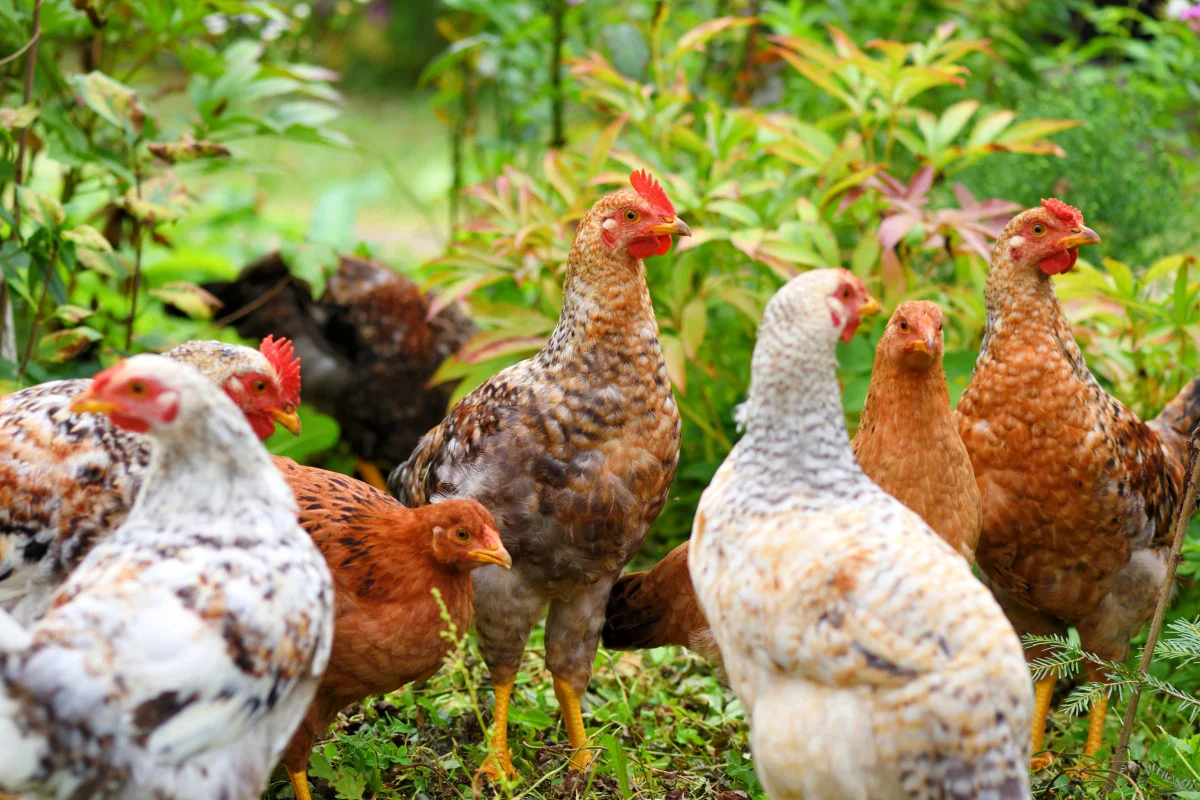
Benefits:
Three benefits of composting are:
- Making good use out of your chicken’s waste
- Increasing the water holding capacity of your soil
- Providing an excellent source of fertilizer for your plants and garden
In fact, chicken manure can provide your garden with more nitrogen, phosphorus and potassium than horse or cow manure can.
Materials:
There are two main methods of composting, but both require similar ingredients and materials.
The first category of materials are “brown” materials, consisting of carbon-rich ingredients that act as food sources for soil-dwelling organisms and aid in filtering air through the pile.
Brown Materials:
- Coop bedding
- Wood shavings
- Dry leaves
- Straw
- Hay
- Paper/Cardboard
Second, we have nitrogen-rich “green” materials.
Brown Materials:
- Chicken manure
- Vegetable and fruit scraps
- Grass, leaf, and plant clippings
- Coffee grounds
- Egg shells
Two Methods of Composting:
1. Cold/Passive Composting
Cold, or passive, composting requires a minimal amount of effort; however, it can take as long as 6 months to over a year depending on the climate where you live.
To begin cold composting, you need a purchased or constructed compost bin. It is common to construct one using wood panels or crates.
Next, using a Carbon to Nitrogen 2:1 ratio, you can begin adding your brown and green material in layers. Starting from the bottom, you will need to pile the ingredients in layers in the following order:
- Carbon materials
- Soil
- Nitrogen-based manure and materials
- Soil
These steps should be repeated until the pile is around 3 feet high.
Next, you need to add water to the pile so that the texture and consistency is the same as a damp sponge.
And that is it! You are essentially letting the pile build and decompose naturally until the mixture is dark and crumbly with the consistency of soil. If possible, it is recommended that you periodically add more water and give the pile an occasional turn with a pitchfork, but otherwise your work is complete until it is ready to be used in your garden.
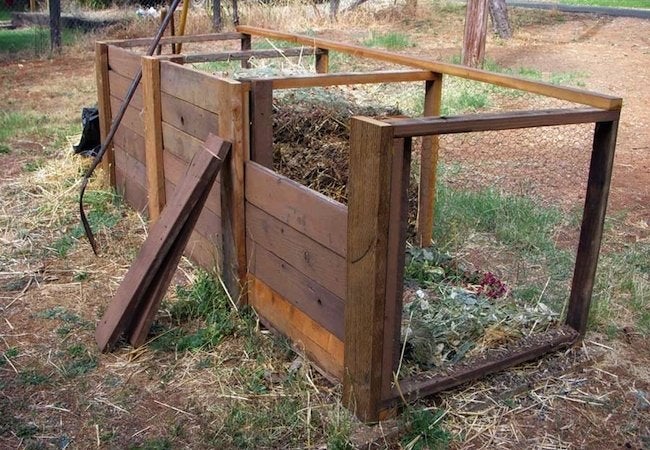
2. Hot/Active Composting
Hot composting is the quicker option for turning your chicken poop into an efficient fertilizer. However, it is a little more hands on and requires a different type of composting bin, known as a tumblr. You may also need to use a thermometer in order to monitor the heat of your pile.
This method is called “hot” composting because it can reach an internal temperature of 150°F by providing an environment where the green material can actively attract the microorganisms that heat things up in order to destroy weed seeds, bacteria, and disease-causing organisms.
The method of adding the compost to your tumblr is the same as in cold composting, whereby you add your brown and green material in layers and add water until the pile is damp.
You will need to check the temperature of the pile with a compost thermometer or an old kitchen thermometer. A temperature of 110°F to 140°F is preferred. If you do not have enough heat, you can add nitrogen by increasing the amount of manure, soft green ingredients, or an organic fertilizer.
Turning daily with a pitchfork or by a spinning tumblr bin, the pile should reach about 150 degrees Fahrenheit within the first week before it cools and becomes a dark, rich, soil-fine compost. In total, the hot composting method should take around 18 days.
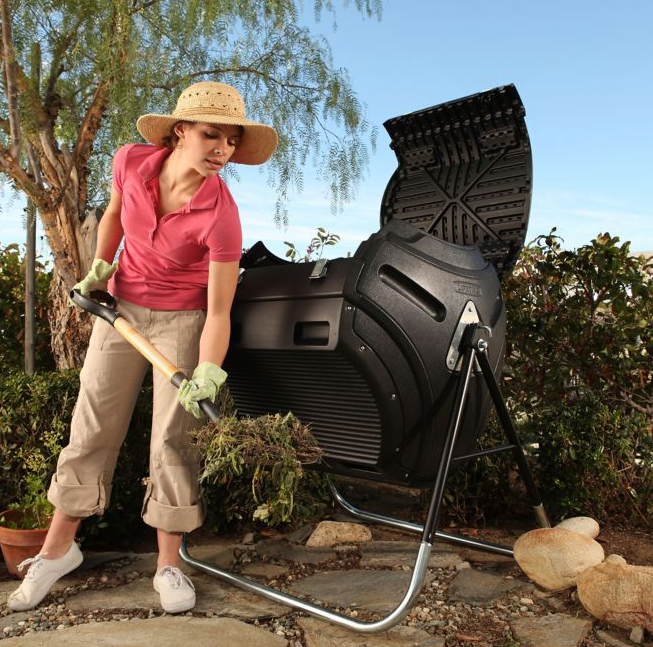
RELATED ARTICLES
Is my Chicken Sick? A Guide To Identifying Illness
Recognizing when your chickens are sick can sometimes be very difficult, primarily because they can hide it very well. As a chicken owner, it is vital to try to recognize early signs before it's too late. You may be wondering how can I tell if my chicken is sick?...
Preparing Your Flock For Winter
As winter approaches, you may wonder what you need to do to prepare your flock for winter and the best ways to care for them. Preparing Your Chicken CoopChicken coops greatly affect how comfortable your chickens are during the winter. There are important steps to take...
Everything You Need To Know About Chicken Combs
What is a Chicken Comb?Chicken combs are the red growths on top of a chicken's head. In rare cases, chicken combs can be black or a shade of purple. They come in a variety of shapes and sizes, but there are nine recognized types: walnut, strawberry, V, rose, single,...

